Ayurvedic Golden Milk Mix: A Thoughtful and Nourishing Holiday Gift
The holiday season is a time for warmth, connection, and sharing thoughtful gifts that nourish the body and soul. A homemade Ayurvedic Golden Milk Mix is the perfect holiday offering—combining tradition, wellness, and comfort in one beautiful package. This soothing blend of turmeric, warming spices, and adaptogenic herbs provides a cozy, healthful drink to enjoy during the colder months, helping loved ones feel balanced and cared for during the hustle and bustle of the holidays.
Why Golden Milk for the Holidays?
Golden milk, or Haldi Doodh, has long been used in Ayurveda as a healing and rejuvenating elixir. Its warming, grounding properties are ideal for countering winter’s cold and dryness, balancing Vata and Kapha doshas. Offering immune support, digestive aid, and a calming ritual, it’s the perfect gift for spreading warmth and wellness during the holiday season.
Winter is governed by Vata and Kapha doshas, which bring qualities of cold, dryness, and heaviness to the season. Golden milk aligns beautifully with the needs of this time of year by providing warmth, moisture, and grounding properties that counterbalance these seasonal influences.
Golden milk embodies Ayurveda’s principles of nourishment and balance, making it a meaningful and practical holiday gift. This warming elixir helps loved ones stay grounded and healthy during the cold winter months while offering a calming ritual to enjoy during quiet moments of reflection. Its vibrant golden hue also symbolizes light, warmth, and abundance—perfect themes for the holiday season.
Balancing Vata: Winter is primarily Vata season, characterized by cold, light, and dry qualities. These attributes can lead to restlessness, fatigue, dry skin, and irregular digestion. Golden milk’s warming spices, such as turmeric, cinnamon, and ginger, are ideal for kindling Agni (digestive fire) and grounding Vata’s scattered energy. The creamy texture, especially when made with plant-based or dairy milk, adds an oily, nourishing quality that helps combat dryness and supports the nervous system.
Soothing Kapha: As winter progresses and the days grow heavier, Kapha dosha can accumulate, leading to congestion, sluggishness, and lethargy. The pungent, warming spices in golden milk help clear stagnation, stimulate circulation, and lighten the heaviness Kapha can bring. Ingredients like black pepper and ginger gently detoxify the system and promote better metabolism, making it easier for the body to stay balanced and energized during the colder months.
Supporting Immunity: Winter is also a time when colds and flu are more prevalent, and golden milk’s ingredients naturally strengthen the immune system. Turmeric’s anti-inflammatory and antimicrobial properties, combined with the circulatory benefits of cinnamon and the digestive support of ginger, create a potent blend to ward off illness. Adding adaptogens like ashwagandha enhances the body’s resilience to stress, which often peaks during the holiday season.
Promoting Restful Sleep: The long, dark nights of winter invite introspection and rest. Golden milk aligns with this natural rhythm by serving as a calming evening ritual. Nutmeg and adaptogens like ashwagandha or shatavari promote deep, restful sleep, helping the body restore and rejuvenate. Drinking a warm, spiced beverage at bedtime creates a sense of comfort and signals the body to relax, ensuring you wake up feeling refreshed.
Encouraging Mindful Moments: Winter wellness is not just about physical health—it’s also about embracing stillness and mindfulness. Golden milk provides an opportunity to slow down and savor a quiet moment, whether in the morning to start the day or in the evening to wind down. This simple act of self-care fosters balance and supports mental clarity during the often hectic holiday season.
By incorporating golden milk into daily winter routines, you’re nurturing your body’s needs for warmth, immunity, and grounding while honoring the season’s natural call for rest and renewal. This Ayurvedic ritual is as much about nourishment as it is about creating space for intentional wellness in the heart of winter.
Ayurvedic Golden Milk Mix Recipe
Ingredients:
1/4 cup ground turmeric
1 tbsp ground cinnamon
2 tsp ground ginger
1 tsp ground cardamom
1/2 tsp ground black pepper (to enhance turmeric absorption)
1 tsp ground nutmeg (optional, for relaxation)
1 tbsp powdered ashwagandha or shatavari (optional, for adaptogenic support)
1/4 cup coconut milk powder (optional, for creaminess)
Instructions:
Combine the Ingredients
In a mixing bowl, whisk together all the spices until evenly combined. If using adaptogens or coconut milk powder, add them at this stage.Package for Gifting
Transfer the mix into an airtight glass jar. Label it with instructions for use and decorate the jar with holiday-themed ribbon, twine, or greenery.How to Use
To make a golden milk latte, simply mix 1 teaspoon of the powder into a cup of warm water or warm milk (dairy or plant-based), stirring until smooth. Sweeten with honey or jaggery if desired.
Gift Presentation Ideas
Personalized Touch: Include a handwritten note explaining the benefits of the ingredients and how they support health and wellness during winter.
Pairing Suggestions: Package the mix with a beautiful mug or a small wooden spoon for stirring.
Festive Flair: Decorate the jar with holiday greenery, such as a sprig of rosemary or cedar, or tie on a cinnamon stick for a festive touch.
Sharing Warmth and Wellness
The holiday season is about more than gifts—it’s about the love and care behind them. This Ayurvedic Golden Milk Mix is a thoughtful way to offer comfort and nourishment, encouraging your loved ones to slow down and enjoy a moment of stillness amidst the holiday excitement.
Whether enjoyed as a morning ritual or a relaxing evening drink, this golden milk blend brings warmth and balance to the season. Share the timeless wisdom of Ayurveda and the spirit of the holidays with a gift that nurtures health, connection, and joy.
Disclaimer: The sole purpose of these articles is to provide information about the tradition of Ayurveda. This information is not intended for use in the diagnosis, treatment, cure or prevention of any disease.






